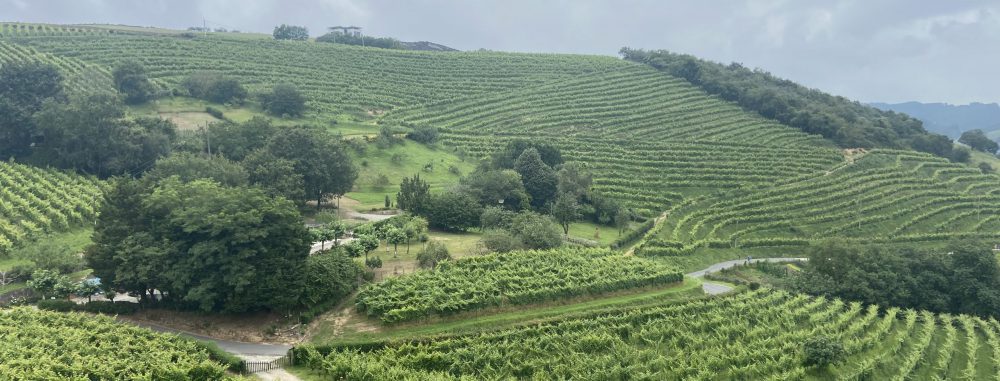Warm Welcome
I’ve always believed that world travel was the greatest form of education. It reverts your mind back to a time when you were small and experiencing the world with fresh eyes. Shortly upon my arrival in San Sebastian, this belief of mine was only reinforced when I found that I was tasked with getting to know the world again—little by little, sensation by sensation.
It was all new. New air, new earth, new architecture. The only familiar thing I had as my bus arrived in San Sebastian was myself, yet I knew even that wouldn’t last. One day in, and the experience had already started to change me.
The Culture
To take in a culture, you must start with its people, and understanding Basque people is no easy feat as an American. It so happens that I arrived on the day of a big game in fútbol: the day that Spain was to play against England. I’m not a prolific football fan myself, but I do know that one is typically expected to root for the team that plays for their city or country. This expectation does not apply to Basque Country. The Basque people have a history of rooting against Spain as a nod to their identity as Basque. So, on the very first night I arrived, I meandered through the streets as darkness fell delicately on San Sebastian to the sound of cheers ringing out from nearby bars and clubs where the game was being played. However, I had no idea who those cheers were for. Many were likely for England. In the end, when Spain won, I could only hope that the Basque wouldn’t be too disappointed.
Being in San Sebastian forces you understand the differences between cultures that exist independently of the state and ones that don’t. It starts with identity. The identity of the Basque people is powerful, important, and even revolutionary; they are a people who will not be overlooked. For this, I am grateful. I had the opportunity to order txakoli and pintxos in Old Town and felt as if I had been sent to heaven. Basque gastronomy is certainly something to behold, and I haven’t even scratched the surface.
Spanish Class
The morning bike ride to my first Spanish class at Lacunza was beautiful and refreshing. We struggled to navigate the bike lanes and made some clumsy errors (such as biking on the pavement, which we learned was a big no-no), but the struggle—along with the burn in my legs from biking uphill—could not compete with the salty smell of the ocean in the air. With sweat on my face and callouses forming on my hands, I arrived at Lacunza feeling like my child-self, fresh from playing outside.
My Spanish class with Lacunza was exactly what language classes should be. Confusing, uncomfortable, and effective. It was as if I was in the midst of a productive dialogue that was getting more and more comprehensive by the minute. The instructor spoke slowly and clearly in her native tongue, making gestures so we could intuitively catch on despite our lack of knowledge. Once again, I felt like a child. It was like learning to speak for the first time. I could practically feel the elasticity in my brain increase! At times, as I stumbled over poorly pronounced Spanish, I couldn’t help but smile. This was exactly how I’d always dreamed of learning, especially with it being alongside people from so many other cultures. I met people from France, Germany, Switzerland, England, and many more countries. I learned about their lives over coffee, cookies, and Spanish tortilla.
The City
The first thing I noticed about San Sebastian was the architecture. I couldn’t help but feel mesmerized at the sight of its buildings. The tallest building in San Sebastian, whose spires and turrets tower over the city, is the cathedral. Its magnificent stature appears medieval over the quaint structures which line the beach front. For me, the cathedral acts as a sort of navigator. You see it and know exactly where you are in relation to it, which has been helping me find my way around the city. The lights, the smell of delicious food, and the history all followed me as we went on a walking tour with a wonderful guide who was ready to answer any questions we had about the places we passed.
What must be said about this extraordinary city and the experience that comes with visiting it is that the place is proud, and rightfully so. They walk confidently, they gesticulate animatedly, their children play unabashedly in the streets, and many of their dogs roam freely. They are kind, but not enough to treat you like you are stupid. Not in San Sebastian. You arrive with wonder, with a thousand questions, or maybe just one. This is a city that has the answer, but it won’t tell you what it is. You come here agreeing to figure it out yourself.
